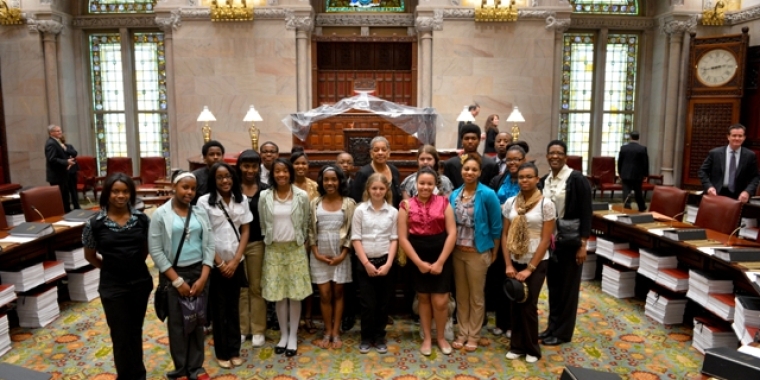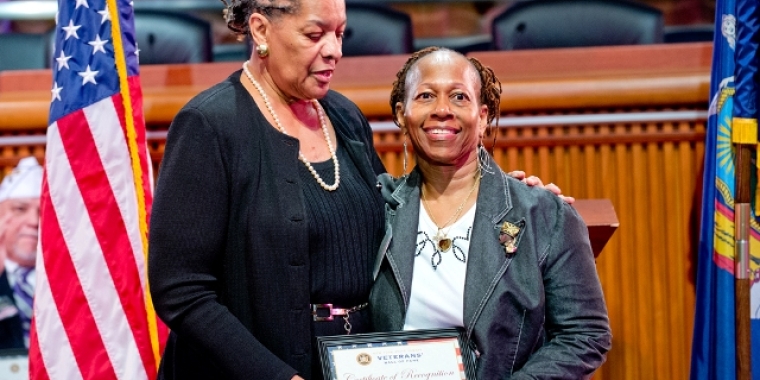
Statement From Senator Ruth Hassell-Thompson on Race to the Top Legislation
Ruth Hassell-Thompson
January 21, 2010
-
ISSUE:
- Education
On February 17, 2009, President Obama signed into law the American Recovery and Reinvestment Act of 2009. Race to the Top is one part of this major federal stimulus package in which states compete for millions of dollars in funding for education. In an effort to make New York’s application more competitive, the Legislature attempted to develop a bill that included new regulatory language to protect the interests of all students in our State.
Much of the conversation about Race to the Top legislation has focused on one component of this bill, charter schools. The reality is that the issue of charter schools is but a small part (less than 10%) of the application process. The true focus of this funding is on how:
- To reduce the achievement gap so that all children have the opportunity to obtain a quality education;
- To help us to develop and retain strong teachers and principals necessary to build successful schools;
- To enhance our students chances for success in college and the workplace as well as their ability to compete in the global economy; and
- To ensure that there is greater transparency in the education of our children.
Although increasing the cap on the number of charter schools might have made the process more competitive, supporters of charter schools were unwilling to adequately be overseen by the state even while expecting to use public funds. The reluctance of the proponents of charter schools to have regulatory language included in this bill adversely impacted our ability to come to an agreement. Those proposing to create new charter schools would have to follow the guidelines of a request for proposal (RFP) approval process. Additionally, this legislation would have eliminated for-profit management companies and corporations from competing for tax dollars and would have authorized the New York State Comptroller’s office to audit all new charter schools. Some of these additional levels of transparency and accountability would have been:
· New York State Education Department (NYSED) would have oversight of charter lottery process.
· Lottery process would be subject to open meetings law.
· Common applications for students applying to charters would have to be produced in languages other than English to reflect the community’s composition.
· All charters schools would be subject to new standards of accountability upon renewal, with annual reporting on the ongoing efforts to recruit and retain high need students.
· Annual reports would have to be posted on charter school website.
· Annual reports would have to be transmitted to local newspapers and made available to the public at board meetings.
· Board meeting must be public and held at the location of the charter school.
· Charter schools board members, officers and employees would be required to comply with codes of ethics and conflict of interest prohibitions, in the same manner as public schools.
Under current law, for profit and not-for-profit management companies are allowed to partner with charter school applicants. Not-for-profit education management companies would be authorized to contract with school boards for the purposes of managing individual schools within the district. Under this new construct, local school boards, including New York City, would no longer be authorized to issue charters. The support of the school district in which the charter school would be located would be a consideration in the RFP process.
The Mayor of New York City and advocates of charter schools also opposed the section of legislation that would give parents of children attending an individual school the opportunity to have a strong role in approving the new placement of charter schools in existing public school buildings. This step is necessary because it ensures that the comments made by parents in this process are considered prior to the approval of a new school in that location.
It should be noted that even without this new legislation, the New York State Education Department submitted an application for Phase One of this federal funding. This legislation would have maximized New York’s eligibility for federal funds, while making our state’s educational infrastructure stronger without compromising what works. No one can deny that it is an absolute priority that New York State do everything possible to guarantee that its children are well-educated and provided with the necessary tools to grow and prosper emotionally and intellectually.



